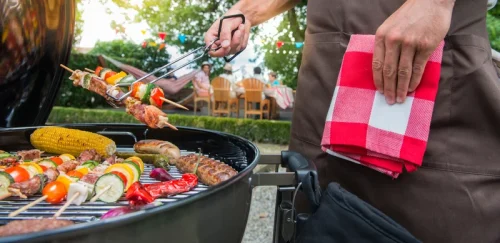
Mood swings and impulsive behavior may cause you to lash out at your closest friends, causing rifts in your social circle. Kids may be less inclined to vape if they have a personal connection to the negative effects of addiction. If you’re in need of in-the-moment support you can contact Childline, where you can speak to a counsellor. If you do find out that your kid has tried vaping, resist the temptation to read them the riot act. “You’re not going to punish, yell, or shame your kid out of vaping,” Koval says.

Take time to practice.

Remember – we tend to repeat the behaviors that we find to be the most rewarding! Leaning into positive reinforcement may feel counter-intuitive; we typically learn to punish behaviors we don’t want to see in our children. Boundaries and consequences are important, but in this case they are necessary but not sufficient. Positive feedback from behaviors is what kept them coming back to vaping – you can use the same feedback process to help them stop vaping. For years, e-cigarettes have successfully been pitched as safer alternatives to traditional cigarettes.
If you’re stressed or anxious:
Although cravings are common in the first few days of quitting, you’ll likely find that they eventually decrease in both frequency and intensity. Triggers are specific situations that increase your urge to vape. For example, smelling vapor in the air or seeing friends vape might increase your craving.
- This is key for continuing an open conversation and relationship of trust.
- “They need to feel like they are not being judged or questioned about their use, but just need advice on how best to handle these situations,” Dahl says.
- Make room for their feelings and let them know it’s okay—whatever they’re feeling is just part of the process.
- Avoid starting the conversation when you or your child are already stressed or in a rush, though.
Tips for talking to your teen about vaping
Please donate today to help us save, support, and change lives. Take a casual approach and let the topic come up naturally. If you’re together when you see an ad or someone vaping in public, for example, you can raise the subject naturally. Avoid starting the conversation when you or your child are already stressed or in a rush, though.
Teens and Vaping—How to Respond, Talk Through It, and Get Them to Stop
It’s also worth knowing that some disposable vapes on sale do not meet UK quality and safety regulations. Quitting a habit that exists within a friend group can have psychosocial effects. That’s why it’s so important to have a plan that involves emotional support and coping skills. If the social aspect of breaking how to deal with peer pressure this habit is ignored, the plan to quit might not succeed. Dr. Gasparino shares tips to help parents have this tough, but necessary, conversation with their kids. Use information from our Get The Facts page to point out how proven physical damage to lungs and brain will affect any athletic aspirations.
If you’re experiencing loneliness and boredom:
- Take a casual approach and let the topic come up naturally.
- It’s good for these conversations to occur more than once, over time, so don’t feel rushed to cram everything into one session, Lebowitz adds.
- Once you have your target goal set, you can begin to adjust your behavior and break the addiction.
- Teens can try out different responses, perhaps saying they tried it before and didn’t like it.
- This raises the risk of periodontal disease, which comes with symptoms such as bad breath, swollen and bleeding gums, difficulty chewing, and loose teeth.
- Before the conversation, get comfortable with the key dangers and potential motivations for kids to vape.
E-cigarettes were first designed to help long-term adult smokers cut back on harmful burning tobacco. Although vapes have no combustion, inhaling vape liquid, aerosol particles, heavy metals, and nicotine is still not safe. While vaping may seem like a safer alternative to smoking, it still exposes users to harmful chemicals and nicotine, posing risks to adolescent health. Special thanks to Dr. Yasmin Cole-Lewis, Dr. Lisa Damour, and Dr. S. Christy Sadreameli, who provided issue expertise and feedback on this vaping conversation guide. Dr. Yasmin Cole-Lewis is a postdoctoral fellow in pediatric pain psychology at Boston Children’s Hospital. Dr. Lisa Damour is a psychologist, best-selling author, monthly New York Times columnist, and regular contributor to CBS News.

Maybe online or television ads tempt you to pick up an e-cigarette. Nicotine addiction is an issue that many people struggle with. However, a thoughtful and strategic approach to tackling the addiction and related habits can make all the difference. Especially now, due to the impact of smoking and vaping on COVID-19, the best way to protect your child is to be in the know. Your conversation tips have been sent to the email address provided. Dr. Popova says that changing social norms will be key to reducing teen vaping.
Harmful effects of vaping
Teenagers typically don’t see the harmful effects of vaping because it has become so normalized within circles of media. Also, with the normal flavors of vape juice such as bubble gum, cotton candy and peppermint can make teenagers think that it is harmless to them. It is important to stay educated and to educate others on the short term and long term effects of using e-cigarettes. This is why having good skills to be able to say no are so important. In the long term, your health is so much more important than what people think of you right now.